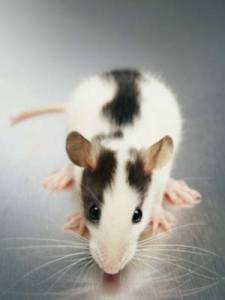The Ticklish Laughter of Rats
“Let’s go tickle some rats.” With those epic words, neuroscientist Jaak Panksepp and his undergraduate assistant, Jeff Burgdorf, went into their Bowling Green State University lab to engage in the hard work of science.
Panksepp, who had been studying play behavior in young human children as well as 50-kHz ultrasonic chirping noises made by juvenile rats during rough-and-tumble play, had just put two and two together: “I had the ‘insight’ (perhaps delusion) that our 50 kHz chirping response in playing rats might have some ancestral relationship to human laughter.”1
The rest has been history, and today Panksepp is undoubtedly the world’s foremost authority on rodent tickling:
…
As they progressed with their research, Panksepp and his colleagues found that many of their rats seemed irresistibly drawn to tickling, chasing after the ticklers and making substantially more play chirps while being tickled than during any other behavior. But the researchers weren’t content with anecdotal observations, and over the course of several years and a number of experiments, they systematically documented a dozen separate lines of evidence suggesting that the rats’ tickle chirping corresponded behaviorally to playful laughter in young human children.2
They compiled data establishing, among other things, that certain areas of the body are particularly ticklish (the nape of the neck, for you do-it-yourselfers), that the most playful rats tend to be the most ticklish, that rats can become conditioned to chirp simply in anticipation of being tickled, that tickle response rates decline after adolescence, that young rats preferentially spend time with older ones who chirp more frequently, that the tickle response appears to generate social bonding, that chirping decreases in the presence of negative stimuli (such as the scent of a cat), that rats will run mazes and press levers to get tickled, etc. Based on their research and observations, Panksepp and his fellow researchers hypothesized that rats, when being tickled or engaging in other playful activities, experience social joy that they vocalize through 50 kHz chirping, a primordial form of laughter that is evolutionarily related to joyful social laughter in young human children.
It’s safe to say that the neuroscientific community did not exactly rush to embrace this hypothesis. Behavioral neuroscience can be a particularly conservative and skeptical field, one that has traditionally been extremely wary of any theorizing about emotions controlling neural processes or behavior in animals. Since subjective experiences cannot, after all, be measured directly, it has been considered far more appropriate to those functional brain activities and processes that can be scanned and measured objectively, and to simply deny or ignore the possibility that animals experience complex emotional states such as joy, at least in the context of scientific research. As Panksepp put it:
Of course, it was hard to publish this kind of work, and it was ironic that the publication of our initial manuscript was impeded by prominent emotion researchers, some of whom take pains to deny that we can ever know whether animals have any emotional feelings.3
Fortunately, time and scientific progress have been on Panksepp’s side. We have identified an increasing number of common underlying structures and processes (homologies) in the brains of humans and other mammals and, as brain scanning technologies have become more sophisticated, we have gained greater insight into neural activities triggered in connection with particular emotional experiences. While the ability to cognitively “get a joke” may depend on our incredibly advanced human neocortex, we now believe that much of the foundational brain circuitry relating to laughter, mirth, social joy, social play and emotional processing lies deep within subcortical regions, where our brains are much more similar to those of other animals.
At this point, Panksepp and his colleagues recognize that they have not definitively proven their hypothesis, but their view is essentially that they have made a reasonable case that fits their data and that hasn’t been disproved:
Until someone can offer us some data that falsifies our hypothesis, we believe our theoretical approach better reveals the true nature of the underlying processes than any intellectual scheme that simply constrains itself simply to the accurate description of the environmental and neural control of behavioral acts.4
Even acknowledging the understandable caution of neuroscientists and the obvious difficulty in drawing scientific conclusions about the subjective experiences of animals, it does seem entirely plausible (and not overly surprising) that social animals such as rats would enjoy playful romping and tickling, and that they might vocalize their pleasure in a way that was somewhat akin to basic human laughter. In fact, we hope and fully expect that, as our knowledge of comparative brain structure and function grows over time, we will see more and more studies that show clear linkages between the minds and brains of humans and other animals.
_____
2Panksepp, J., & Burgdorf, J. (2003) “Laughing” rats and the evolutionary antecedents of human joy?. Physiology & Behavior, 79(3), 533-547. DOI: Panksepp, J., & Burgdorf, J. (2003). “Laughing” rats and the evolutionary antecedents of human joy?Physiology & Behavior, 79 (3), 533-547 DOI: 10.1016/S0031-9384(03)00159-8.
3Panksepp & Burgdorf (2003).
4Panksepp (2007).



Sem comentários:
Enviar um comentário